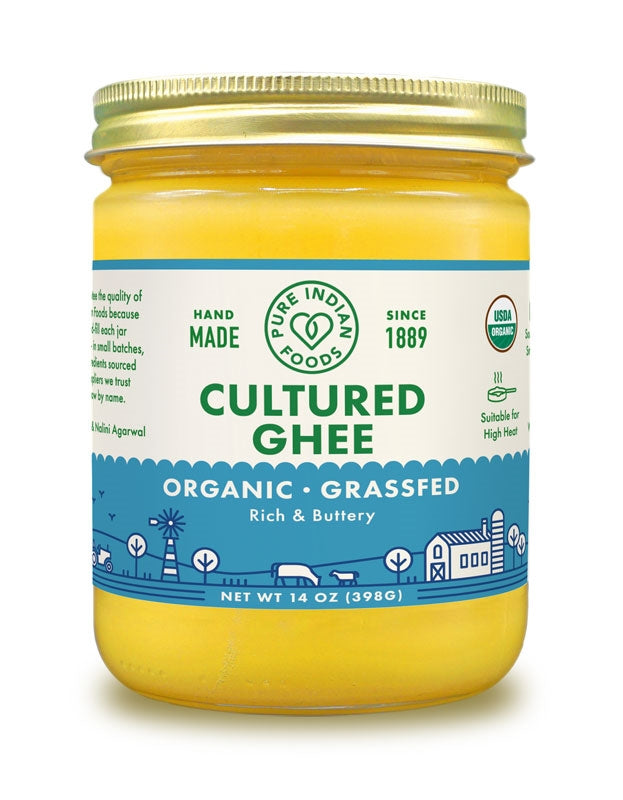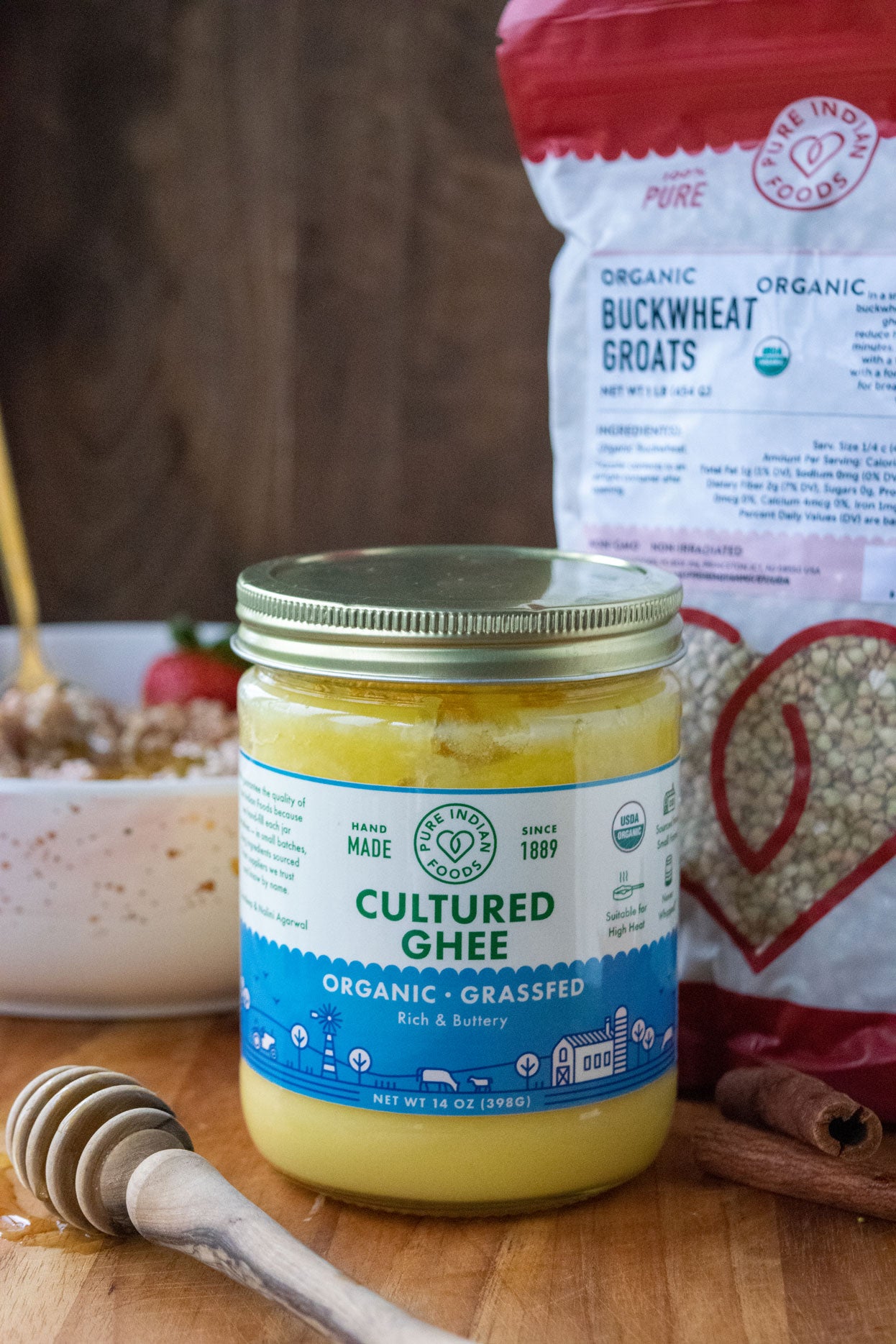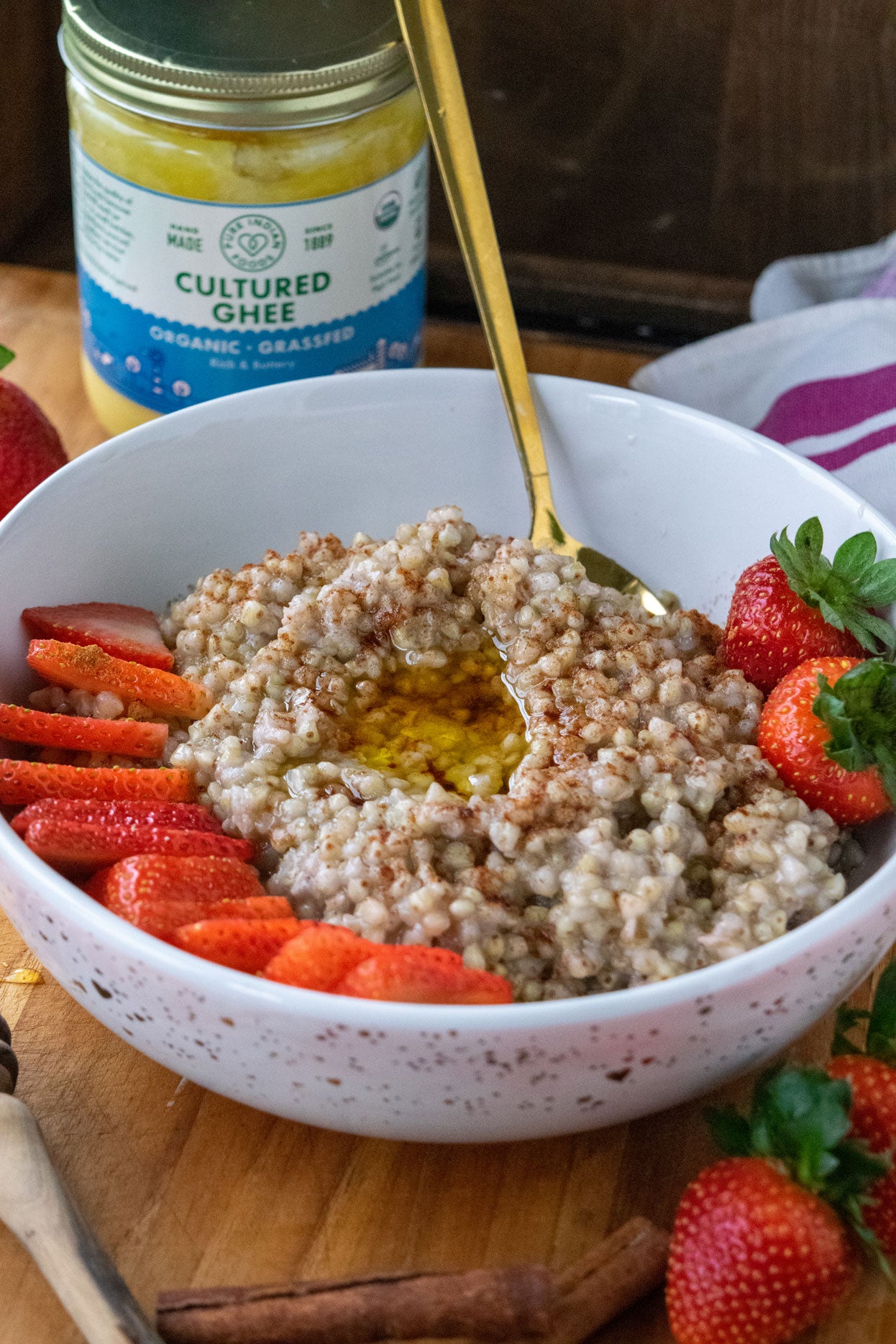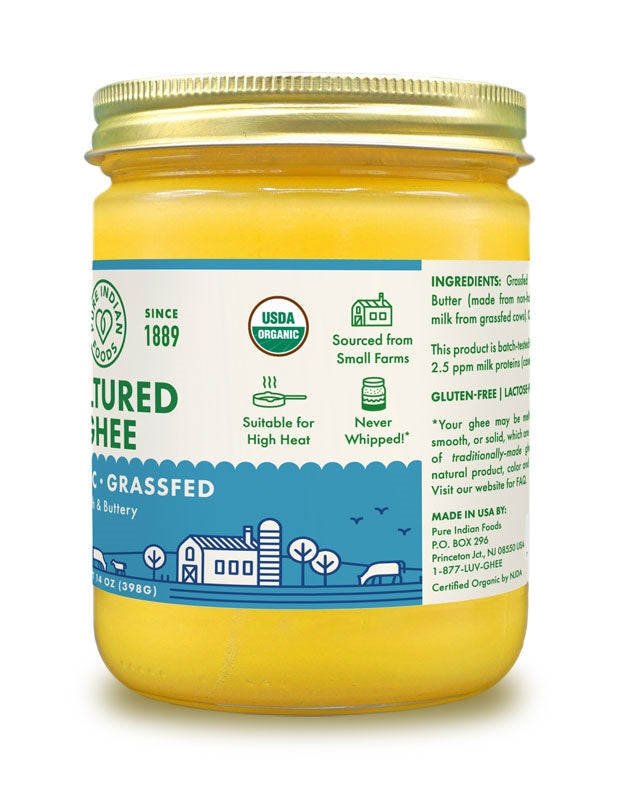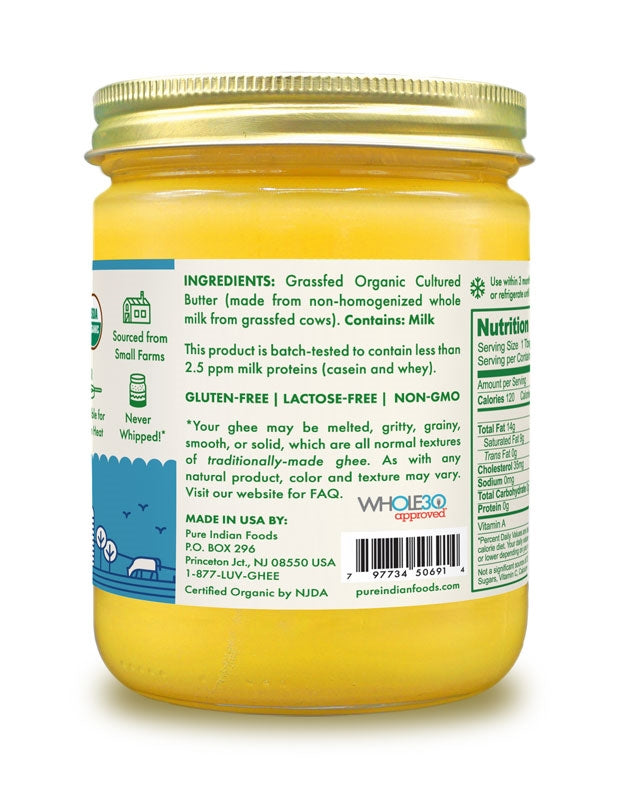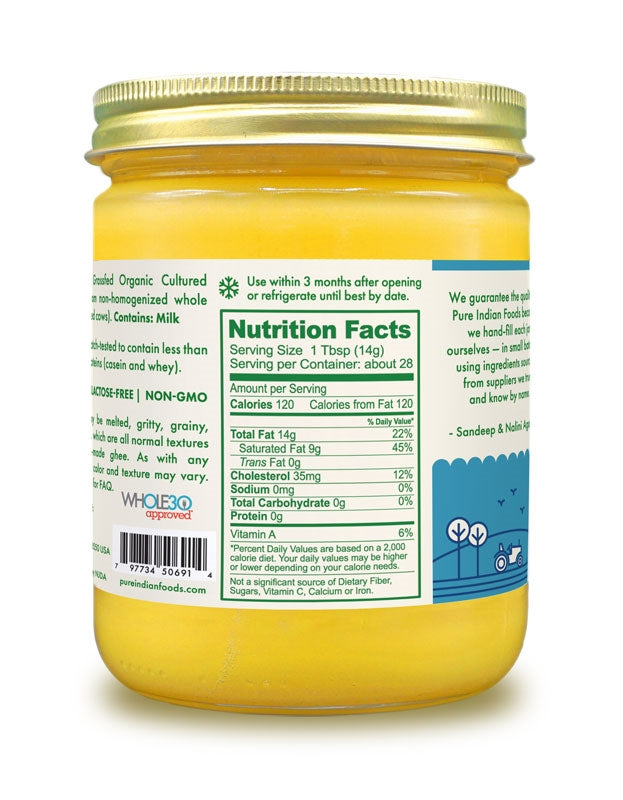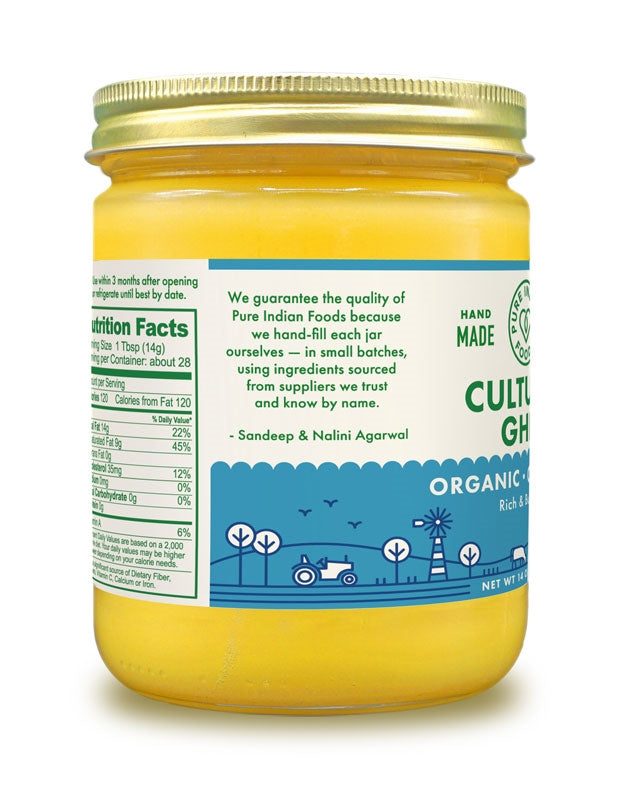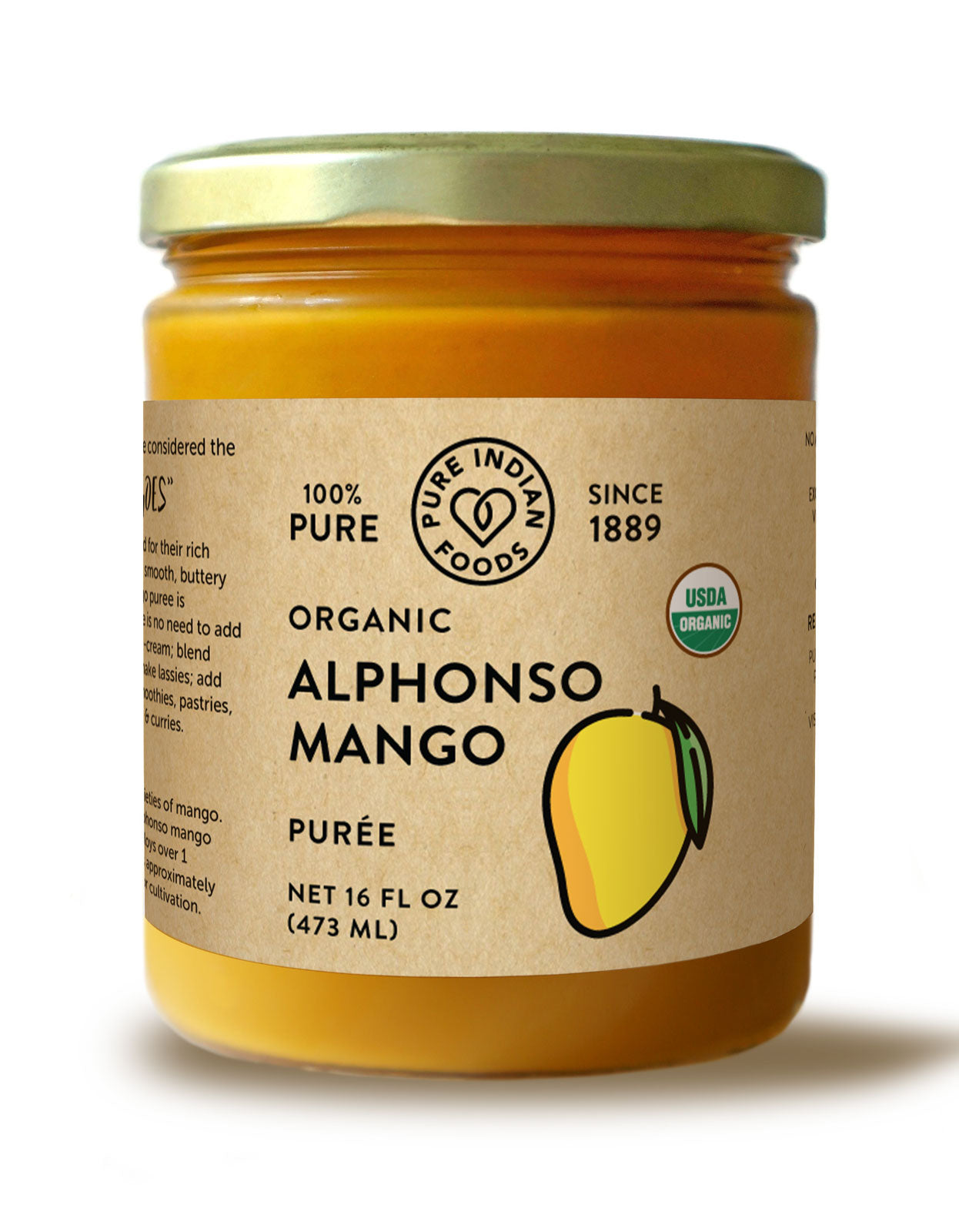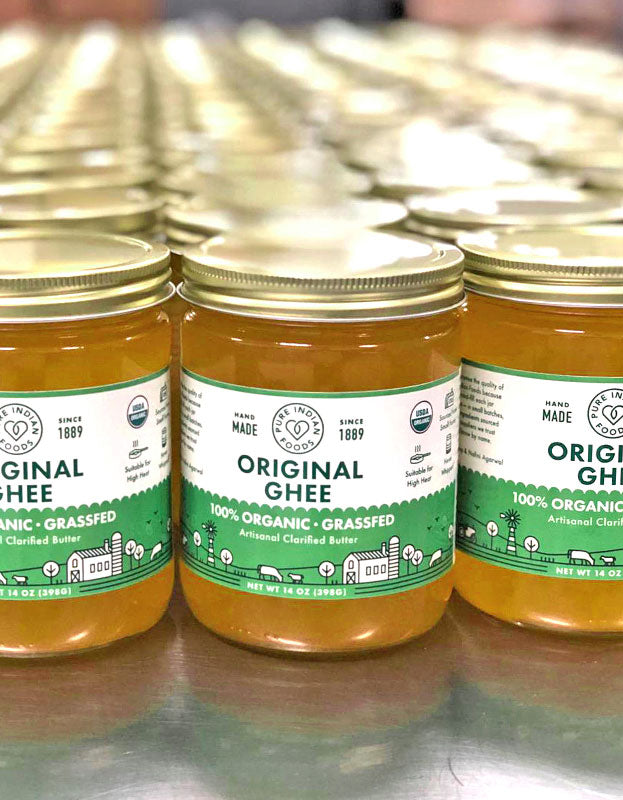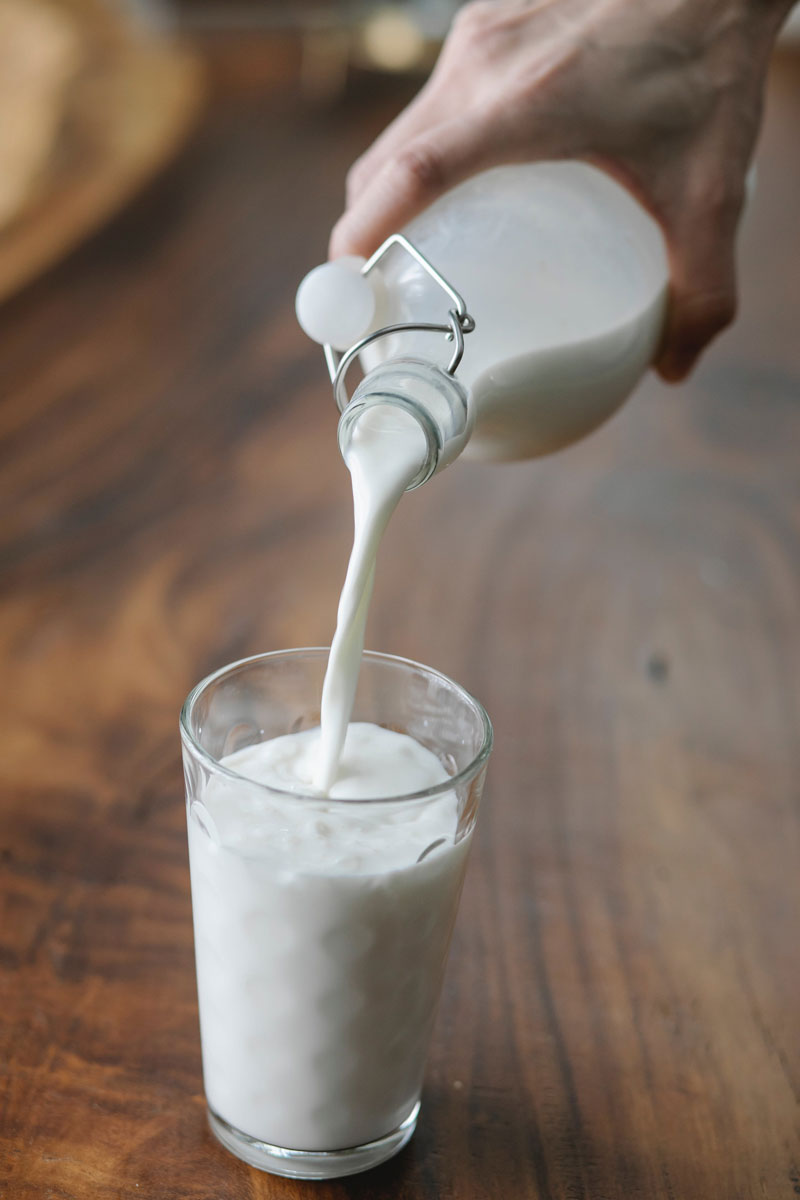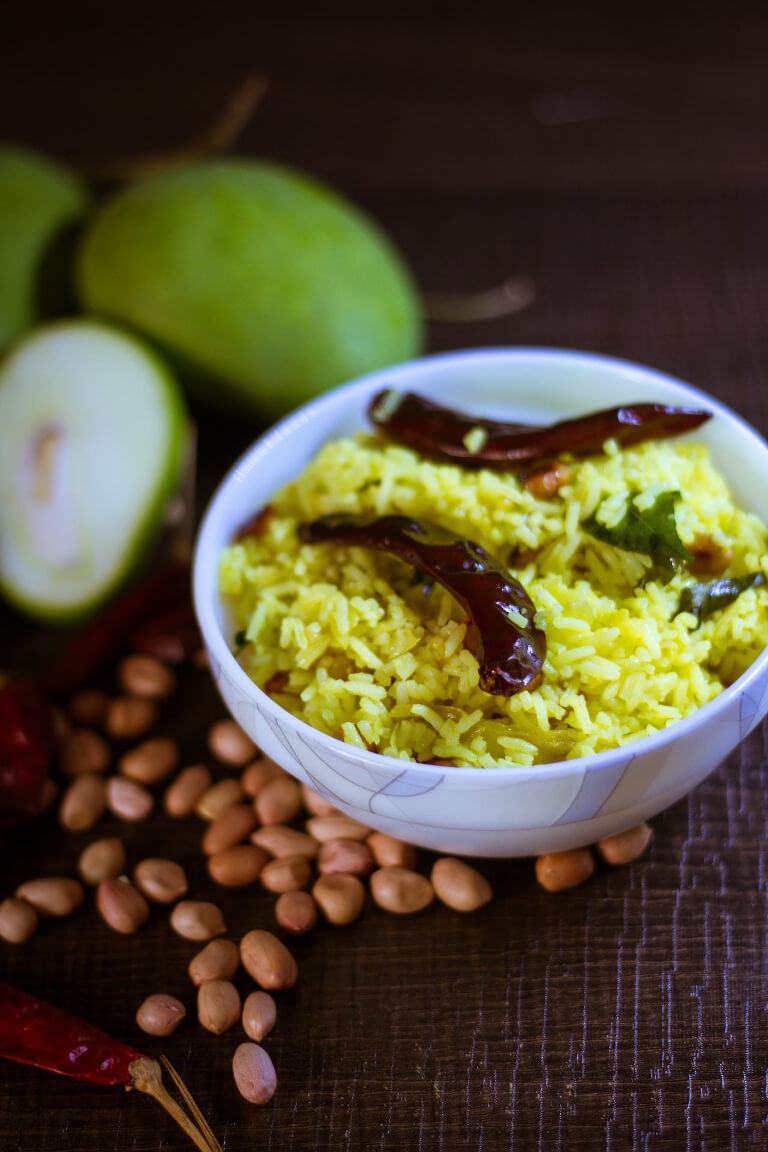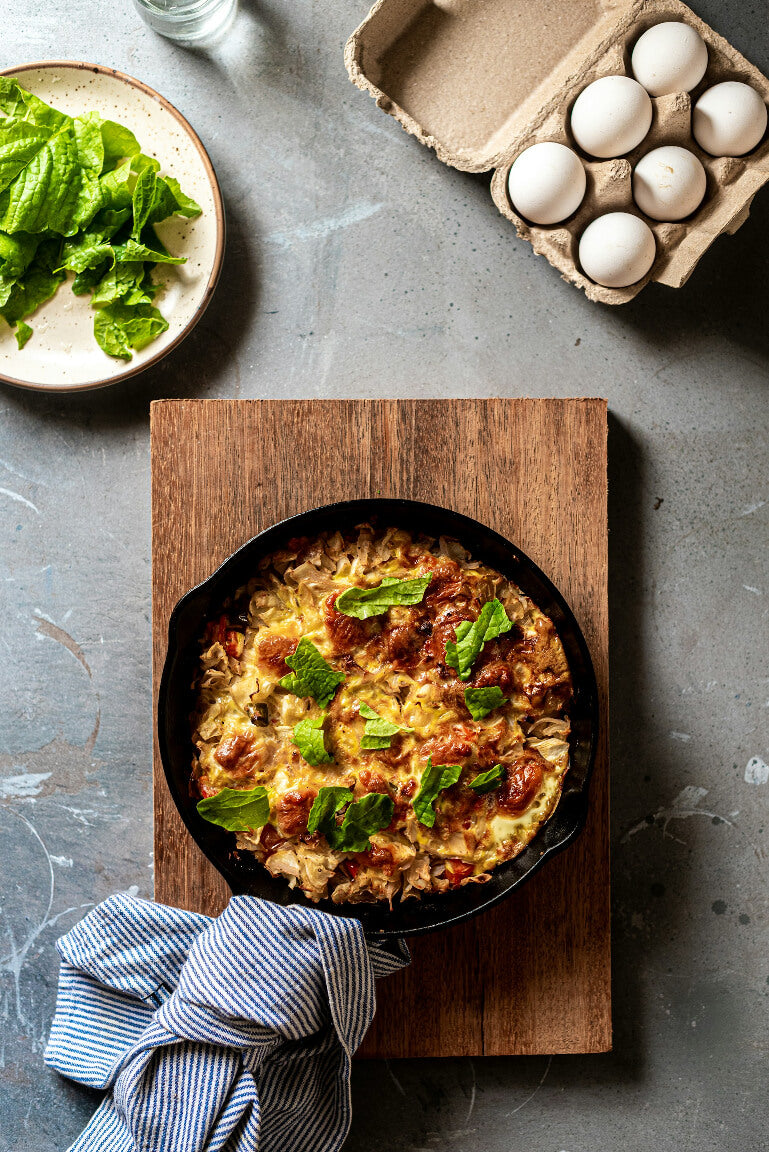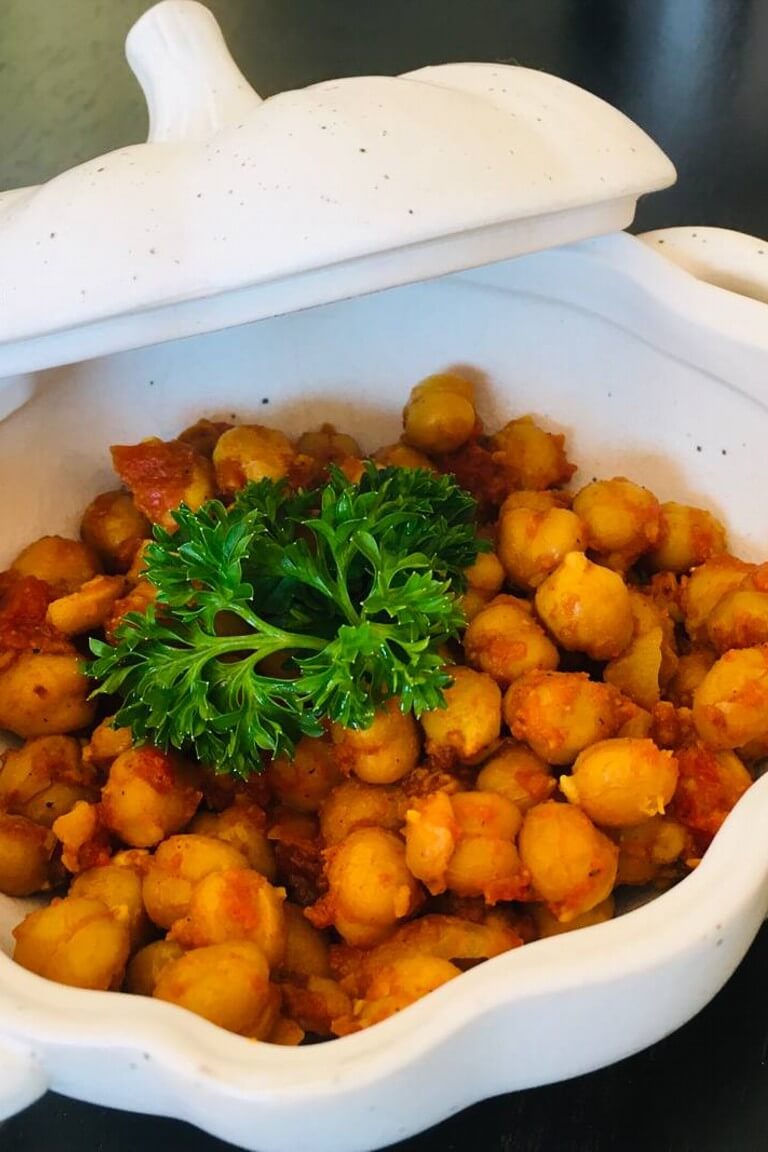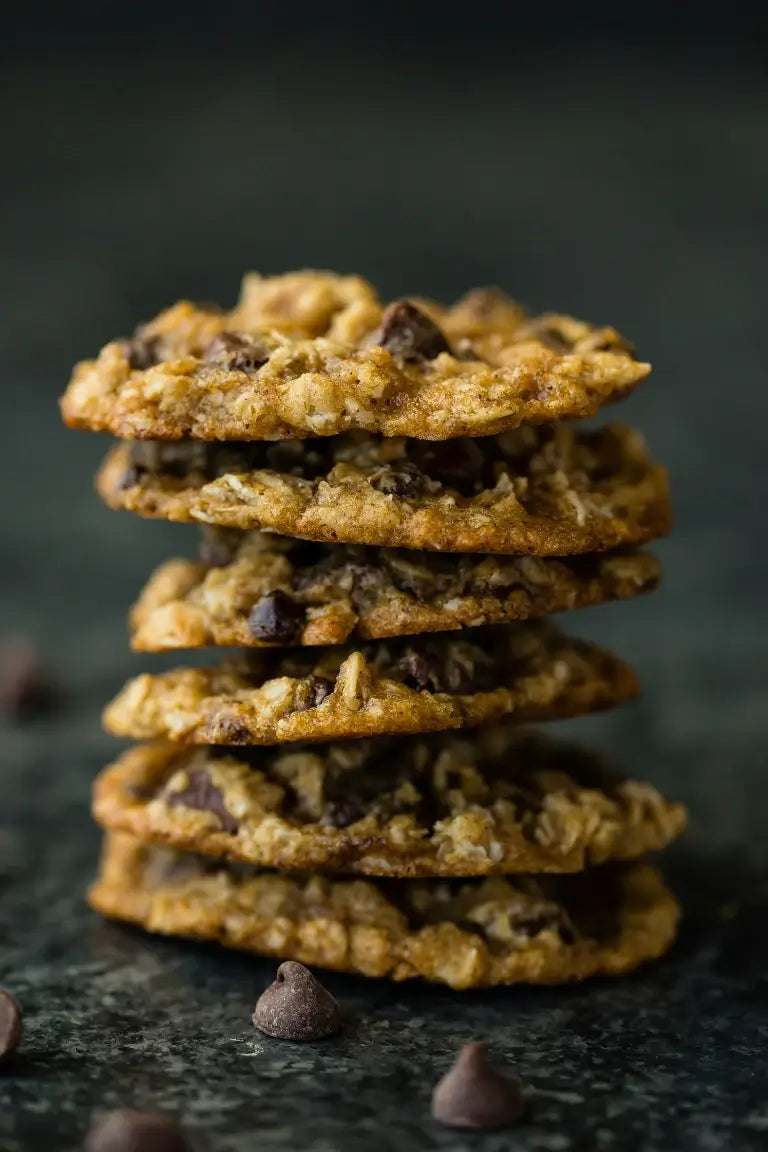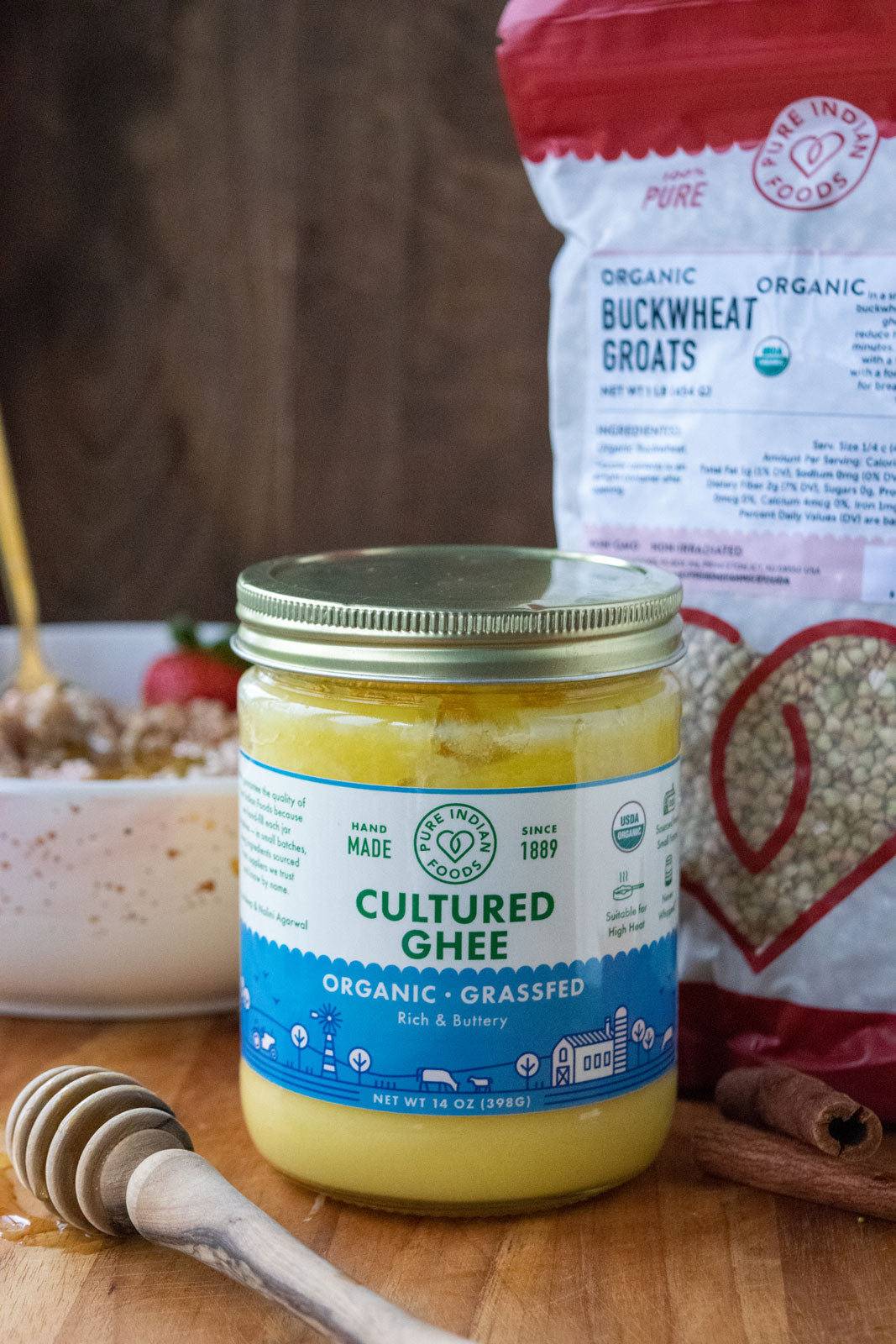
Our Cultured Ghee is Batch-Tested
Our Grassfed Organic Cultured Ghee is made using the Bilona method from the milk of pastured cows, fed on fresh green grass in spring thru fall. The only ingredients are milk and cultures, with absolutely nothing else added to it. Batch-tested Gluten-Free. Lactose batch-tested to contain no more than 0.25%. Casein and whey batch-tested to be 2.5 ppm or less.
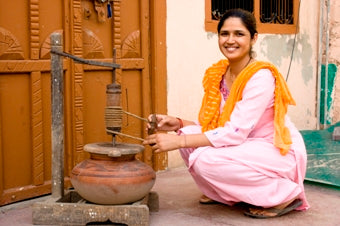
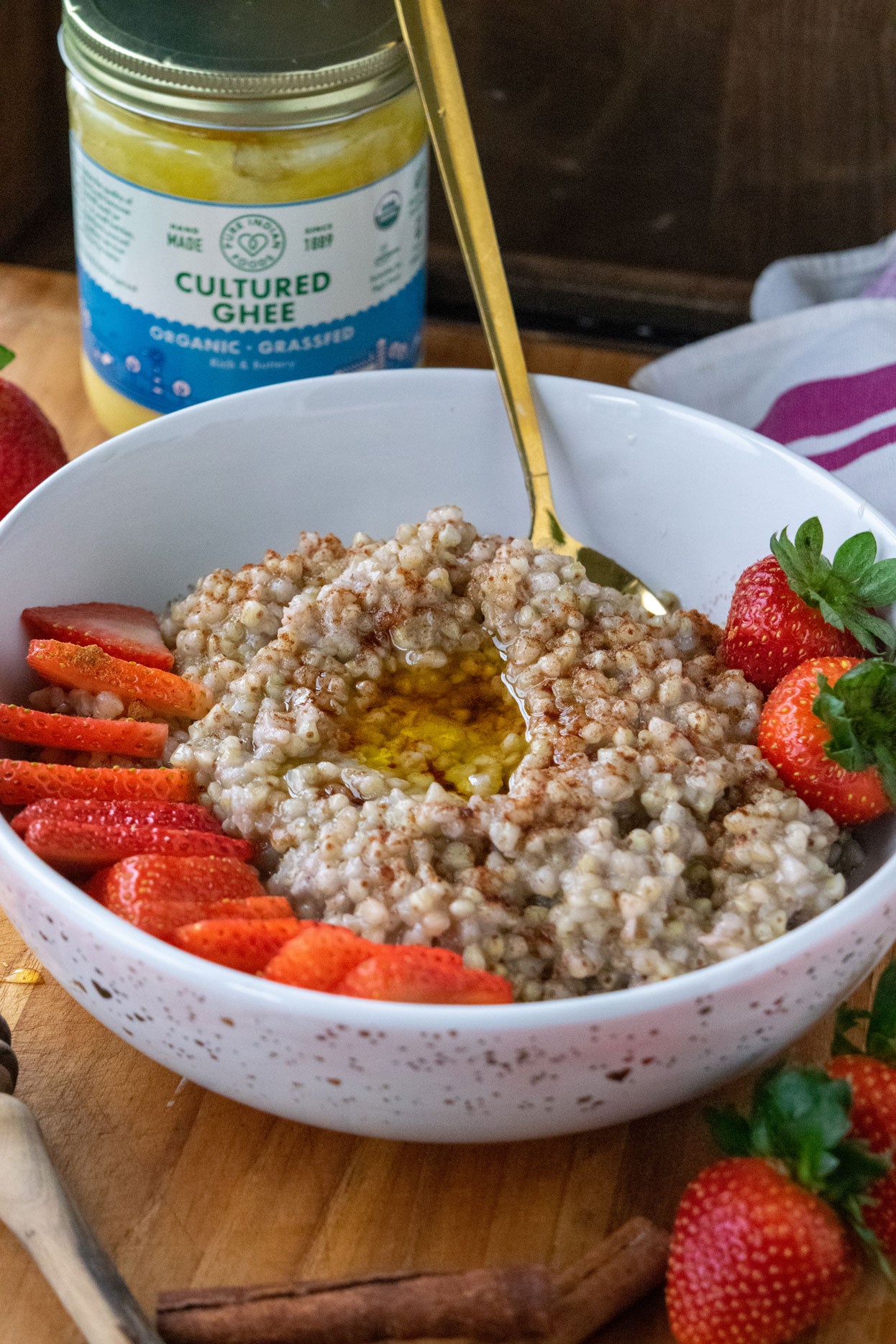
What is cultured ghee?
Ghee is one of the most sacred and healing foods described by the ancient Ayurvedic texts. Our traditional Cultured Ghee recipe has been used for thousands of years. The ancient tradition of Ayurveda considers Cultured Ghee important for strengthening Agni, our powerful digestive fire.
It is made by a simple process of gently simmering cultured butter to remove potential allergens such as casein and lactose. What remains is the pure delicious butter oil, described as conferring good health and longevity.
One of the traditional processes of making ghee involves culturing the cream before churning it into butter and then clarifying it into ghee. Pure Indian Foods Cultured Ghee is made by following this age-old and time-honored practice. The result is a delightfully aromatic ghee with a slight tangy flavor characteristic of naturally cultured foods.
And as always, Pure Indian Foods ghee is made from milk obtained only during the spring through fall when the cows are on the pasture eating fresh, green grass.
First photo: This Indian woman is churning yogurt in an earthen pot to make cultured butter. Hand churning is no longer practiced to commercially prepare cultured butter.
Common Questions
How is ghee made?
How is ghee made?
What does "made with non-homogenized milk" mean?
What does "made with non-homogenized milk" mean?
How do I open the jar?
How do I open the jar?
How do I keep my ghee fresh / avoid contamination?
How do I keep my ghee fresh / avoid contamination?
Is my ghee texture normal?
Is my ghee texture normal?
Is ghee considered dairy?
Is ghee considered dairy?
How much ghee can I have daily?
How much ghee can I have daily?
What is the shelf life of ghee?
What is the shelf life of ghee?
My ghee was delivered and sat outside in the heat. Is it still safe to use?
My ghee was delivered and sat outside in the heat. Is it still safe to use?
My ghee smells strong and/or kind of cheesy. Is it bad?
My ghee smells strong and/or kind of cheesy. Is it bad?
Where do you source your milk?
Where do you source your milk?
Why do you use grass-fed milk?
Why do you use grass-fed milk?
Do you use A2 milk?
Do you use A2 milk?
Why is my ghee this color?
Why is my ghee this color?
Testimonials
Kind Words About Ghee
Posts About Ghee
- Choosing a selection results in a full page refresh.
